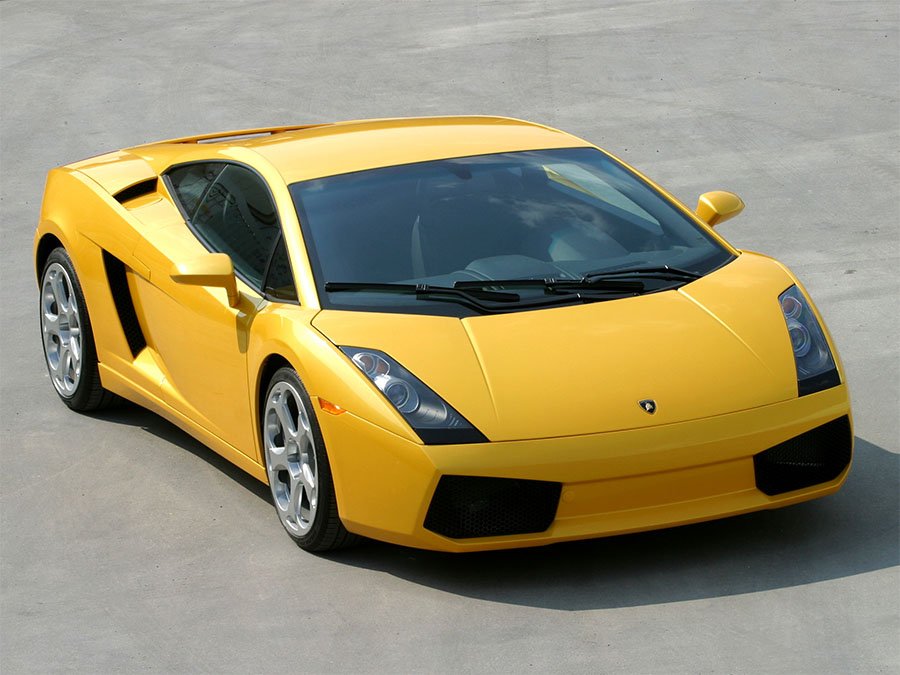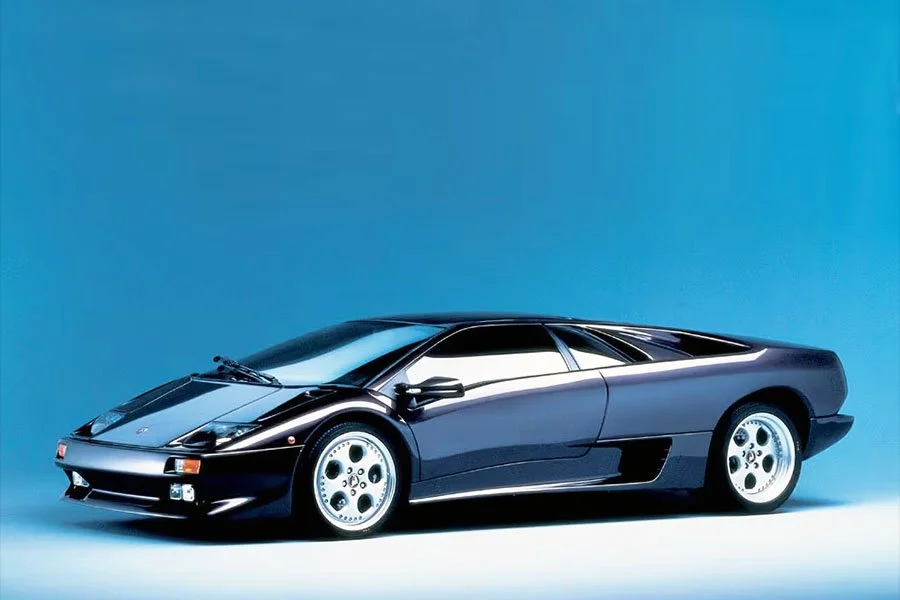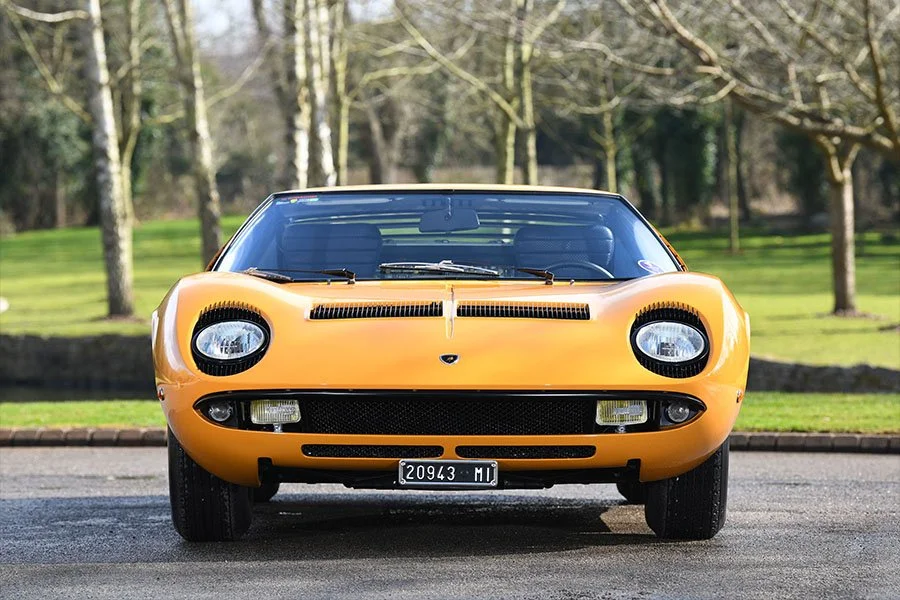Guide: Baby Lambo Done Right - a Historical & Technical Appraisal of the Lamborghini Gallardo
/BACKGROUND
After several false starts and a handful of tantalising concepts, Lamborghini finally launched a brand new junior model at the Geneva Motor Show in March 2003.
The stunning four-wheel drive V10-powered Gallardo was a highly anticipated successor to the long since discontinued Jalpa which had been dropped way back in 1988. At that time, Automobili Lamborghini was owned by Chrysler; the American car giant had purchased the Sant’Agata firm one year earlier from the Mimram brothers who had themselves rescued it from bankruptcy in 1980.
Although Chrysler had big plans for Lamborghini, which included a less expensive offering to sell alongside the Diablo, the early 1990s recession slashed demand for high end vehicles and the expensively developed P140 Jalpa replacement was killed off during the final stages of development.
Chrysler subsequently bailed out in 1993, at which point Automobili Lamborghini was sold to Megatech, a Bermuda-registered holding company for Malaysian investment group Mycom Setdco and Indonesian group V Power Corporation.
Under new ownership, the handsome Ital Design-styled P140-based Cala was displayed at the Geneva Motor Show in March 1995, but there was simply not the cash required to develop it any further.
Things didn’t change until Lamborghini was acquired by the Volkswagen Audi Group (VAG) in 1998. At this point a sudden influx of optimism swept around the Italian company thanks to the German firm’s massive financial and technological clout.
VAG immediately sanctioned two major projects: rework the Diablo’s successor into something acceptable and start on a clean sheet junior model.
Having produced the Cala a few years prior, Ital Design were contracted to style the new baby Lamborghini. VAG also commissioned Ital Design to create a new Bugatti concept dubbed the Chiron - the legendary French auto maker had formed part of VAG’s 1998 acquisition spree that additionally included Bentley. However, the decision was ultimately made to rework both Ital Design projects at VAG’s in-house styling department. Unsurprisingly, the Gallardo programme fell to Luc Donckerwolke who had successfully styled Lamborghini’s Diablo replacement (the Murcielago).
In typical fashion, the new entry level Lamborghini’s name had a bullfighting connection; Francisco Gallardo was an 18th century bull breeder from Santa Maria, Cadiz.
Unlike the Murcielago (which had been launched at the Frankfurt Motor Show in 2001), the Gallardo assembly process was a truly international affair with German-built spaceframes and body panels and Anglo-Hungarian engines trucked to Italy for assembly.
Production began in the summer of 2003. Lamborghini planned to build 1300 examples of their entry level offering every year.
CHASSIS
The Gallardo was based on an extruded aluminium spaceframe designed by Audi and assembled at the German firm’s Neckarsulm plant. It had a long 2560mm wheelbase with short overhangs and weighed in at less than 250kg.
Suspension was via aluminium double wishbones, coil springs and adaptive Koni FSD dampers that automatically adjusted according to driving conditions. Anti-roll bars were installed along with anti-dive and anti-squat geometry.
Vented discs of 365mm with eight-piston aluminium calipers were fitted up front. At the rear were 335mm diameter discs with four-piston calipers.
Driver aids included ABS, ESP, ABD and ASR.
The 19-inch diameter Cassiopea design wheels originally came shod with Pirelli P Zero Rosso tyres. The fronts measured 8.5-inches wide and the rears were 11-inches.
Twin fuel tanks with a combined 80-litre capacity were mounted low down on either side of the engine.
ENGINE / TRANSMISSION
In the engine bay was a 90° V10 derived from Audi’s existing 4.2-litre V8.
The Lamborghini version was extensively reworked in conjunction with Cosworth Engineering in England (another VAG company). It featured an aluminium-alloy block and heads, dual overhead camshafts with four valves per cylinder, dry-sump lubrication and was longitudinally mounted in the chassis.
Standard hi-tech equipment of the time included variable length induction manifolds and continuously variable intake and exhaust valve timing.
Displacement was 4961cc thanks to a bore and stroke of 82.5mm and 92.8mm respectively.
Engine management was via Lamborghini’s LIE system with individual static ignition, multipoint fuel-injection, a fly-by-wire throttle and onboard diagnostics.
The compression ratio was set at 11.0:1.
In this configuration peak output was 493bhp at 7800rpm and 376lb-ft at 4500rpm.
The block and heads were built at Cosworth and shipped to Audi’s Gyor plant in Hungary for assembly.
Transmission was through a rear-mounted six-speed gearbox, twin-plate clutch and permanent four-wheel drive system with mechanical torque-sensing viscous coupling that split the power 30:70 in normal conditions. An electronically-controlled brake-activated front axle differential was employed (ABD) along with a rear-mounted mechanical limited-slip diff with 45% locking ratio.
In standard trim, the Gallardo came with a conventional six-speed manual gearbox.
An expensive option was a Magnetti Marelli F1-style transmission that Lamborghini called E-Gear. Shifts were executed via paddles mounted behind the steering wheel. In manual trim, E-Gear offered a choice of four operating modes (Normal, Sport, Automatic and Winter). There was also a fully automatic mode.
Both types of gearbox were built on Lamborghini’s behalf by Graziano Trasmissioni in Turin.
BODYWORK
Luc Donckerwolke’s reworking of Ital Design’s original concept resulted in a machine with a clearly family lineage to the Murcielago. Much time was spent at Audi’s Ingolstadt wind tunnel.
The front apron housed a pair of enormous radiator intakes either side of a flat recessed fascia. Underneath was a jutting fully integrated chin spoiler. Further up were distinctive Bi-xenon headlights mounted under clear glass covers.
Down each flank were conventional instead of scissor doors and forward leaning electric folding mirrors. Slim intakes were added behind each door and atop the rear fenders.
The A-pillars and roofline swept rearwards to lend a Fastback profile. In between the traditional rear buttresses was a flat heavily vented engine cover. An electronic rear spoiler automatically deployed into the airflow at 130kmh and retracted at 80kmh.
Five large rectangular vents were carved out from the tail fascia along with a louvred bank ahead of each high-level light cluster.
A matt black rear valance incorporated a massive venturi. The Gallardo’s underside was almost completely flat.
Aside from thermoplastic bumpers and sills, the rest of the bodywork was fashioned from aluminium and fabricated in Germany. These panels were then shipped to Italy where they were riveted, bolted and welded to the spaceframe.
INTERIOR
The Gallardo’s cabin was designed with typical German attention to detail.
On the driver’s side of the elegant sloping dash was an instrument binnacle that housed four analogue gauges split by a digital read out for supplementary information. Large dials for road and engine speed were flanked by smaller instruments for water temperature and fuel. The three-spoke steering wheel had a flat bottom to give a sporty fell and improve access.
Three additional instruments were located at the top of a sweeping central control panel: oil pressure, oil temperature and battery volts. Further down were a trio of circular air vents and the rest of the switchgear.
Leather was used to cover practically every surface apart from the cockpit pillars and roof (alcantara) and the floors / sidewalls (carpet).
The list of standard equipment included dual-zone air-conditioning, a full complement of airbags, electric windows, electric heated exterior mirrors, a Lamborghini multimedia system with 6-disc CD shuttle, manually adjustable seats and a tyre pressure monitoring system.
OPTIONS
In addition to the aforementioned E-Gear paddle-shift transmission, Lamborghini offered a range of optional extras to include metallic paint, a transparent engine cover, dark finish wheels, crested wheel centres, winter tyres and a sports exhaust.
There was also a sport suspension option with 15% stiffer front and 20% stiffer rear dampers but no change in ride height.
Interior-wise there was two-tone upholstery, leather and alcantara upholstery, contrast stitching, a DVD-based satellite navigation system and analogue TV tuner.
WEIGHT / PERFORMANCE
The Gallardo weighed in at 1430kg with a 42 / 58 front-to-rear distribution.
0-62mph took just 4.3 seconds and the new baby Lamborghini was as fast as a Murcielgao up to 150mph.
Top speed was 192mph.
GALLARDO POLIZIA
In May 2004, Lamborghini presented the first of two Gallardos to the Italian Polizia di Stato in Rome’s Piazza del Popolo.
These cars were fitted with a full array of law enforcement equipment to include sirens, flashing lights, satellite navigation and a GSM telephone. A Provida system was able to record violations and send / receive data and images from the central police database in real time. There was also an Elsag Autodetector system for automatic number plate recognition.
Medical supplies were carried as well.
Upon delivery, the two Polizia Gallardos were used by traffic officers on the Salerno-Reggio Calabria autostrada in Southern Italy and for high speed organ delivery.
Both were finished in a traditional blue and white State Police livery and reputedly destroyed while on duty.
GALLARDO SE
In July 2005, Lamborghini announced a limited edition Gallardo SE that would be available from the following September.
250 were to be built, all of which came with two-tone paint and upholstery.
Customers could choose from one of six exterior colours, all of which came with contrasting gloss black Nero Octis paint for the roof, engine cover, rear spoiler, front air intake inlays, exterior mirrors and the rear fender vents located ahead of each tail light cluster.
The Callisto wheels that became an option for 2006 model year Gallardos were fitted as standard and given a dark grey finish. Brake calipers were painted either grey or yellow.
Upholstery was a mix of black with body coloured inserts for the door panels, transmission tunnel, handbrake gaiter, instrument bezels, lower centre control panel and steering column shroud. Seat piping and stitching were coloured to match.
Other special equipment included Lamborghini embossed headrests and a black steering wheel with coloured Lamborghini crest and alcantara rim.
Sports suspension was fitted as standard along with Pirelli P Corsa Zero tyres and a rear view camera integrated with the multimedia screen.
The SE was officially presented at the Frankfurt Motor Show in September 2005 alongside the new Gallardo Spyder.
It featured all the 2006 model year updates (see below) and the entire production run was sold out prior to delivery of the first customer car.
GALLARDO SPYDER
Just under two-and-a-half years after the original Gallardo had been launched, Lamborghini unveiled a Spyder version at the Frankfurt Motor Show in September 2005. Released for the 2006 model year (when a series of across the board updates were carried out – see below), the Gallardo Spyder had been designed from the ground up which explained the lengthy delay until its release.
It was the first production offering from Lamborghini to come with a proper folding roof; the Murcielgao Roadster employed a flimsy canvas top for emergency use, the Silhouette and Jalpa had both incorporated a simple targa top while the 350 GTS could hardly be considered a production model with only two examples having been completed.
To increase rigidity, the Gallardo Spyder’s spaceframe was suitably reinforced, most notably with beefed up sills and A-pillars. The windscreen was more steeply raked and an automatic roll-over protection system comprised two pop-up hoops that were integrated with the air bag system.
The neat black fabric roof was operated by two buttons on the centre console and took just over 20 seconds to either raise or lower. When down, the roof disappeared completely from view below the new carbonfibre engine cover. When up, the driver could raise or lower the rear window.
At 1570kg, the Gallardo Spyder weighed in at 140kg more than the Coupe.
2006 MODEL YEAR PRODUCTION CHANGES
To coincide with the Spyder’s arrival, Lamborghini made a series of updates to the Gallardo for the 2006 model year.
Thanks to a re-mapped engine management system, peak output went from 493bhp at 7800rpm to 513bhp at 8000rpm. The torque rating was unchanged
The gearbox was equipped lower ratios for all gears: first was 27% lower, second was 13% lower, third, fourth and fifth were all 6% lower and sixth was 3.5% lower. The E-Gear option now featured a launch control function.
Lamborghini also added more direct steering, recalibrated suspension and an updated exhaust system.
New optional extras included Callisto wheels, painted wheels, an onboard computer, a pair of tailored suitcases, a rear camera, heated electric seats, coloured brake callipers, leather and carbon fibre interior packages and a front axle lifting system.
Several new exterior and interior colours were made available as well.
Performance figures were slightly improved over the outgoing 493bhp model. The Coupe’s top speed went from 192mph to 196mph. Its 0-62mph time dropped from 4.3 to 4.2 seconds. Performance figures for the Spyder were 196mph with the roof up, 192mph with the roof down and 0-62mph in 4.3 seconds.
GALLARDO NERA
Lamborghini introduced a second Gallardo special edition at the Paris Motor Show in September 2007: the Nera.
185 were built, all of which were painted high gloss black with a matte finish applied to the front lid inserts, roof, upper rear fender sections and exterior mirrors. The Callisto rims were painted high gloss black to match. Silver brake calipers were fitted as standard. Smoked tail light assemblies were unique to the Nera.
Upholstery was black with white inserts for the door panels, lower section of the steering wheel, knee roll, handbrake gaiter, instrument bezels, lower central control panel and steering column shroud. Seat piping and stitching were coloured to match. Q-citura diamond quilted inserts were applied to the seat centres and door inserts. Carbonfibre cockpit trim was standard.
AD PERSONAM PROGRAMME
At the Detroit Motor Show in January 2008, Lamborghini expanded their Ad Personam personalisation programme to include a new range of matt paint colours, Q-citura diamond quilted upholstery, gloss black interior panels and extra exposed carbonfibre inserts for both the Murcielago and Gallardo.
END OF PRODUCTION
Gallardo production continued until August 2008, at which point Lamborghini introduced the updated LP560-4 variant.
By this time, the Gallardo had long since become the most commercially successful Lamborghini ever with 8588 examples completed. Of these, 5942 were to Coupe specification and the remaining 2646 were Spyders.
Text copyright: Supercar Nostalgia
Photo copyright: Lamborghini - https://www.lamborghini.com
































































